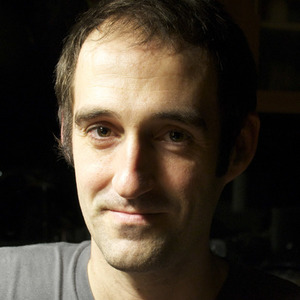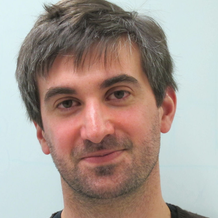Human Pose, Shape and Action
3D Pose from Images
2D Pose from Images
Beyond Motion Capture
Action and Behavior
Body Perception
Body Applications
Pose and Motion Priors
Clothing Models (2011-2015)
Reflectance Filtering
Learning on Manifolds
Markerless Animal Motion Capture
Multi-Camera Capture
2D Pose from Optical Flow
Body Perception
Neural Prosthetics and Decoding
Part-based Body Models
Intrinsic Depth
Lie Bodies
Layers, Time and Segmentation
Understanding Action Recognition (JHMDB)
Intrinsic Video
Intrinsic Images
Action Recognition with Tracking
Neural Control of Grasping
Flowing Puppets
Faces
Deformable Structures
Model-based Anthropometry
Modeling 3D Human Breathing
Optical flow in the LGN
FlowCap
Smooth Loops from Unconstrained Video
PCA Flow
Efficient and Scalable Inference
Motion Blur in Layers
Facade Segmentation
Smooth Metric Learning
Robust PCA
3D Recognition
Object Detection
Physics of Body Shape and Motion

Humans live in a real world governed by the laws of physics; that is, we apply and exploit forces, such as gravity, in our daily interactions with the world. In this project we allow virtual humans to interact with a virtual world subject to the laws of physics. How would one's body shape deform in case of a collision with an object? How would our walk pattern look like if we weighed a few kilos more?
To model soft-tissue dynamics, we learn a layered volumetric body model from data []. To enable this we extend the triangulated mesh of the SMPL body model with a volumetric tetrahedral model called VSMPL. VSMPL contains an inner "rigid" layer and an outer soft-tissue layer. Given 4D sequences of people in motion, we learn the physical properties (Young's modulus) of the outer tetrahedra. We do this such that, when simulated in motion using a finite element method, the surface motion of the VSMPL model resembles the observations. The learned model is a realistic full-body avatar that generalizes to novel motions and external forces.
We also address the problem of retargeting the captured motion of one person onto a different person with a different body shape and physical properties (e.g.~taller, heavier, thinner) such that the new morphology is taken into account []. We obtain visually plausible simulations using a simplified representation of human body shape that we animate using physically-based retargeting. We develop a novel spacetime optimization approach that learns and robustly adapts physical controllers to new bodies and constraints. The method automatically adapts the motion to a subject with the novel target body shape, respecting the physical properties, and producing an appropriate movement. This makes it easy to create a varied set of motions from a single mocap sequence by simply varying the characters.
Members
Publications





